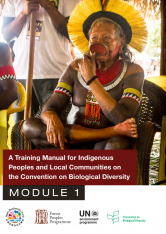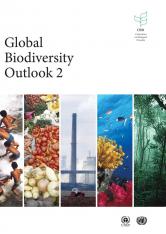Process
The processes of the Convention on Biodiversity and its Cartagena Protocol on Biosafety and the Nagoya Protocol on Access to Benefit Sharing are critical in providing guidance on actions to protect biodiversity. The main processes are the decision-making bodies, subsidiary bodies or other expert groups that provide frameworks and other guidance to governments and other stakeholders. The main framework is the Strategic Plan for Biodiversity and its Aichi Biodiversity Targets for 2020. Government are also in the process of developing a post-2020 Global Biodiversity Framework.
Please visit the information center for additional information.
Calendar of Events for 2019 and 2020
Global Consultation Workshop on the Post-2020 Global Biodiversity Framework, Biosafety and the Cartagena Protocol, 25 August 2019, Nairobi, Kenya
The Conference of the Parties (COP) is a governing body meeting that advances the implementation of the Convention on Biological Diversity through negotiations and decisions. The COP is held every two years.
COP-MOP - The Conference of the Parties serving as the meeting of the Parties to the Cartagena Protocol on Biosafety (COP-MOP) is a governing body meeting that advances the implementation of the Cartagena Protocol on Biosafety through negotiations and decisions. The Conference of the Parties serving as the meeting of the Parties to the Nagoya Protocol (COP-MOP) is a governing body meeting to advance the implementation of the Nagoya Protocol on Access to Benefit Sharing through negotiations and decisions. The COP-MOPs are held every two years back-to-back with the COP.
The Subsidiary Body on Scientific, Technical and Technological Advice (SBSTTA) is an intergovernmental scientific advisory body to COP that provides advice on technical aspects to COP and COP-MOPs to advance implementation of the Convention and its Protocols. SBSTTA consists of government representatives with expertise in relevant fields, as well as observers from non-Party governments, the scientific community, and other relevant organizations. The SBSTTA is held once a year.
The Subsidiary Body of Implementation (SBI) is a subsidiary body to COP that provides advice on policy and programmatic issues to advance implementation of the Convention and its Protocols. The SBI is held once a year.
Expert groups are additional bodies to COP and SBSTTA that provides advice on, among others, particular issues on technical, scientific, policy, training or partnerships to advance implementation of the Convention and its Protocols. Some of the expert groups are Ad Hoc Technical Expert Groups (AHTEGs), working groups, liaison groups, workshops and online forums.
Strategic Plan for Biodiversity (2011-2020), including its Aichi Biodiversity Targets, provides an overarching framework on biodiversity, not only for the biodiversity-related conventions, but for the entire United Nations system and all other partners engaged in biodiversity management and policy development. The vision is: "Living in Harmony with Nature" where "By 2050, biodiversity is valued, conserved, restored and wisely used, maintaining ecosystem services, sustaining a healthy planet and delivering benefits essential for all people." The plan has five strategic goals, including twenty Aichi Biodiversity Targets. The twenty Targets are organized under five strategic goals.
The Strategic Plan is translated into revised and updated National Biodiversity Strategies and Action Plans (NBSAPs). To date, there are also Subnational Biodiversity Strategies and Action Plans (SBSAPs) and Regional Biodiversity Strategies and Action Plans (RBSAPs).
In 2020 the Conference of the Parties will adopt a post-2020 Global Biodiversity Framework as a stepping stone towards the 2050 Vision of "Living in harmony with nature". The process contains a set of principles to guide its implementation, an organization of work and sets out a comprehensive consultation process, including provisions for global, regional and thematic consultation meetings. The negotiations to develop the post-2020 global biodiversity framework is undertaken by an open-ended intersessional working group.
Programmes of work guide work on thematic programmes of work. COP established seven thematic programmes of work that correspond to some of the major biomes on the planet. The seven programmes of work are Agricultural Biodiversity, Dry and Sub-humid Lands Biodiversity, Forest Biodiversity, Inland Waters Biodiversity, Island Biodiversity, Marine and Coastal Biodiversity and Mountain Biodiversity.
Cross-cutting programmes of work and other processes directly or indirectly support work under thematic programmes of work, for example, the work on indicators provides information on the status and trends of biodiversity for all biomes. Others develop discrete products quite separate from the thematic programmes - Biological and Cultural Diversity, Biodiversity for Sustainable Development, Capacity Building, Climate Change and Biodiversity, Communication, Education and Public Awareness, Economics, Trade and Incentive Measures, Ecosystem Approach, Ecosystem Restoration, Gender and Biodiversity, Global Strategy for Plant Conservation, Global Taxonomy Initiative, Health & Biodiversity, Impact Assessment, Identification, Monitoring, Indicators and Assessments, Invasive Alien Species, Liability and Redress, New & Emerging Issues, Peace and Biodiversity Dialogue Initiative, Protected Areas, Sustainable Use of Biodiversity, Sustainable Wildlife Management, Technical and Scientific Cooperation, Technology Transfer, Tourism and Biodiversity and Traditional Knowledge, Coral reef, Mainstreaming, pollinators, Access to Benefit Sharing, Biosafety, Digital Sequence Information and Synthetic biology.
Principles, guidelines and other tools work to provide voluntary guidance to advance the implementation of the Convention and its Protocols and to achieve the Aichi Biodiversity Targets. Work under the programmes of work are, among others, to develop principles, guidance and other tools.

